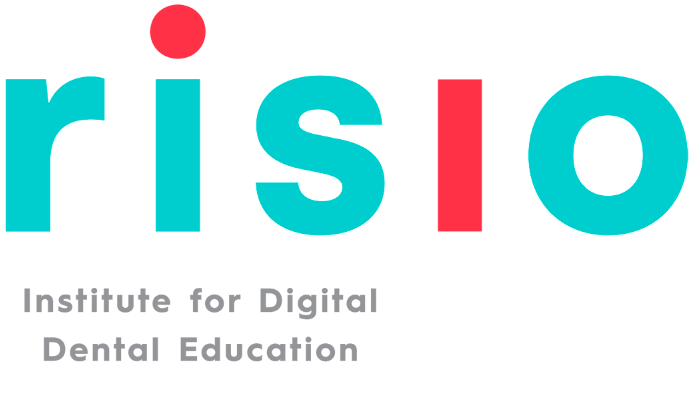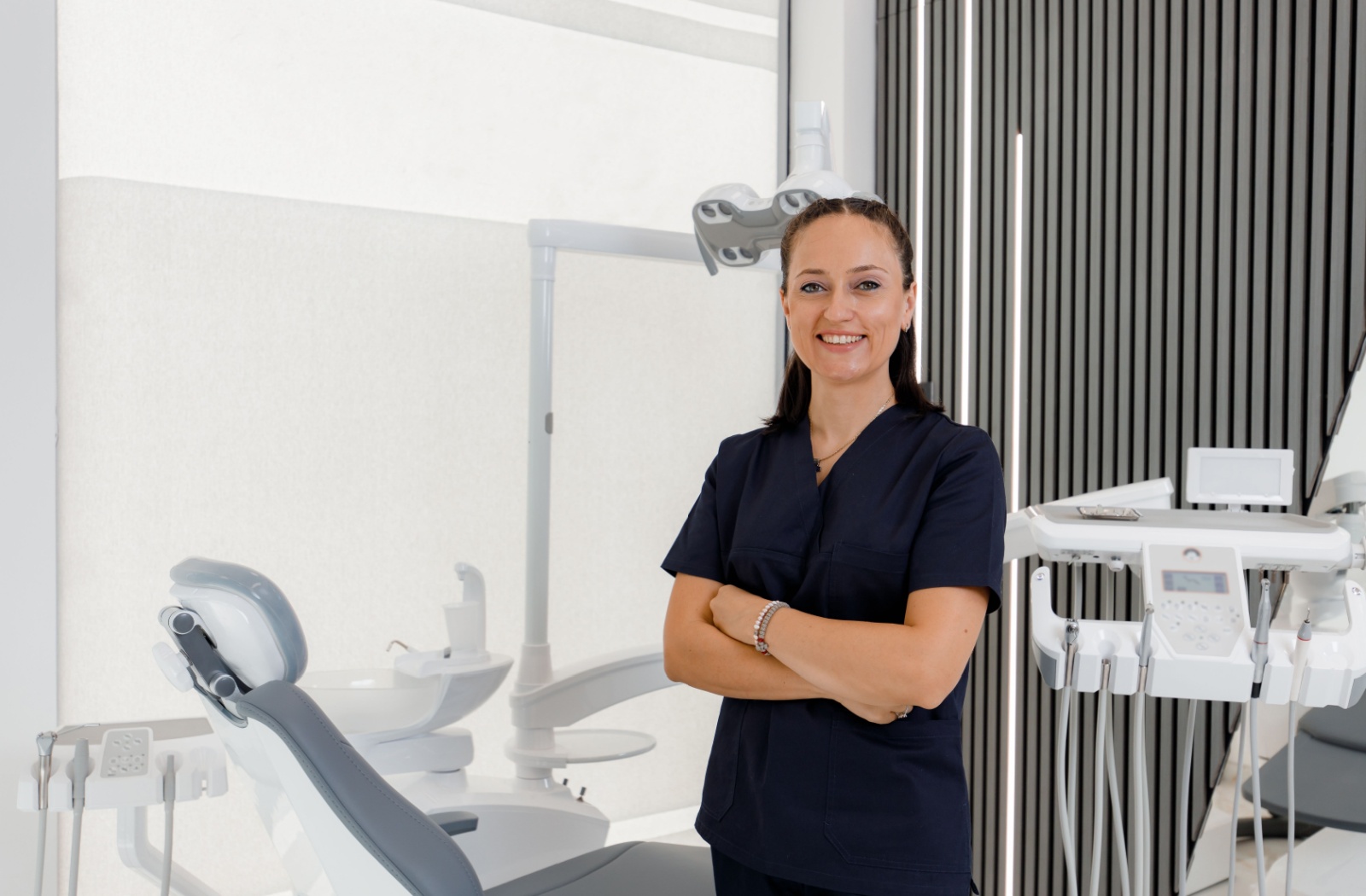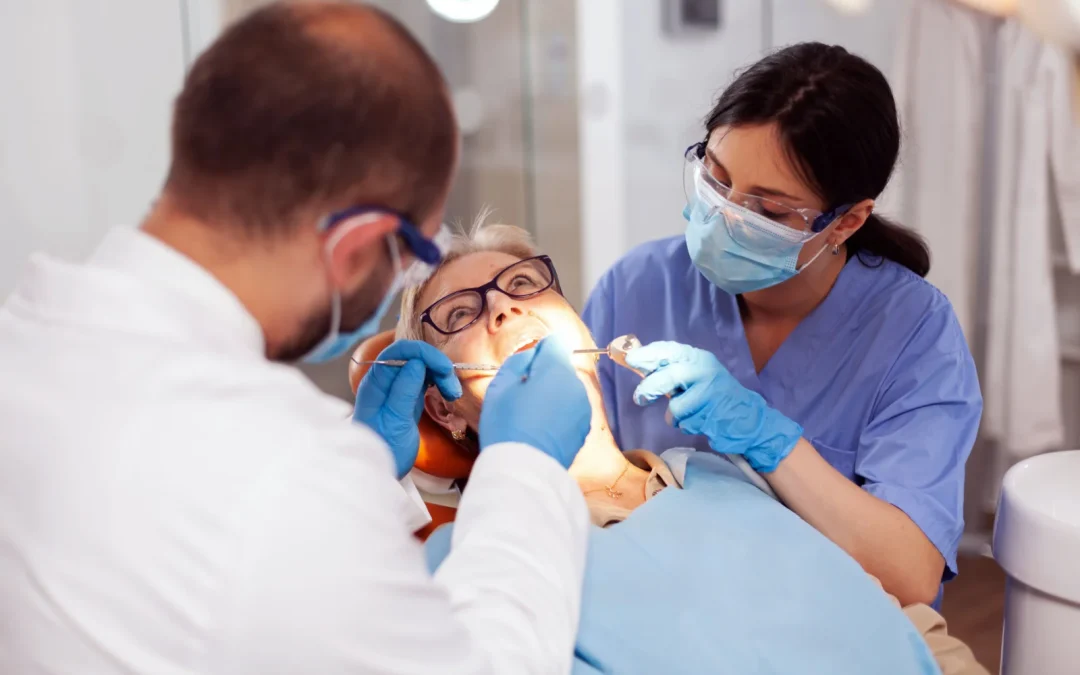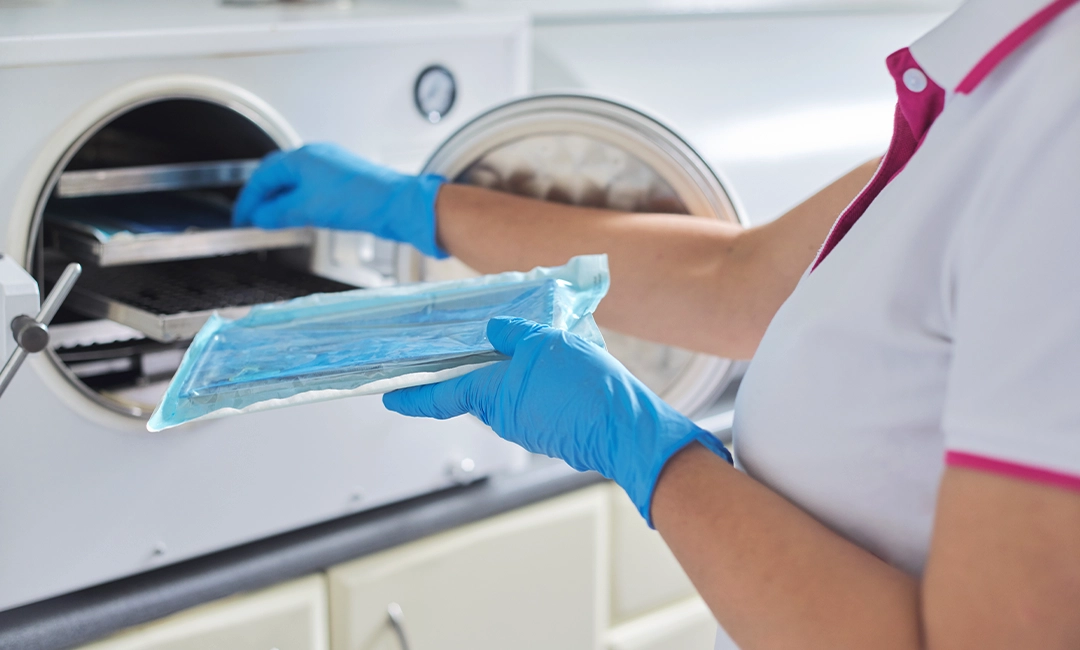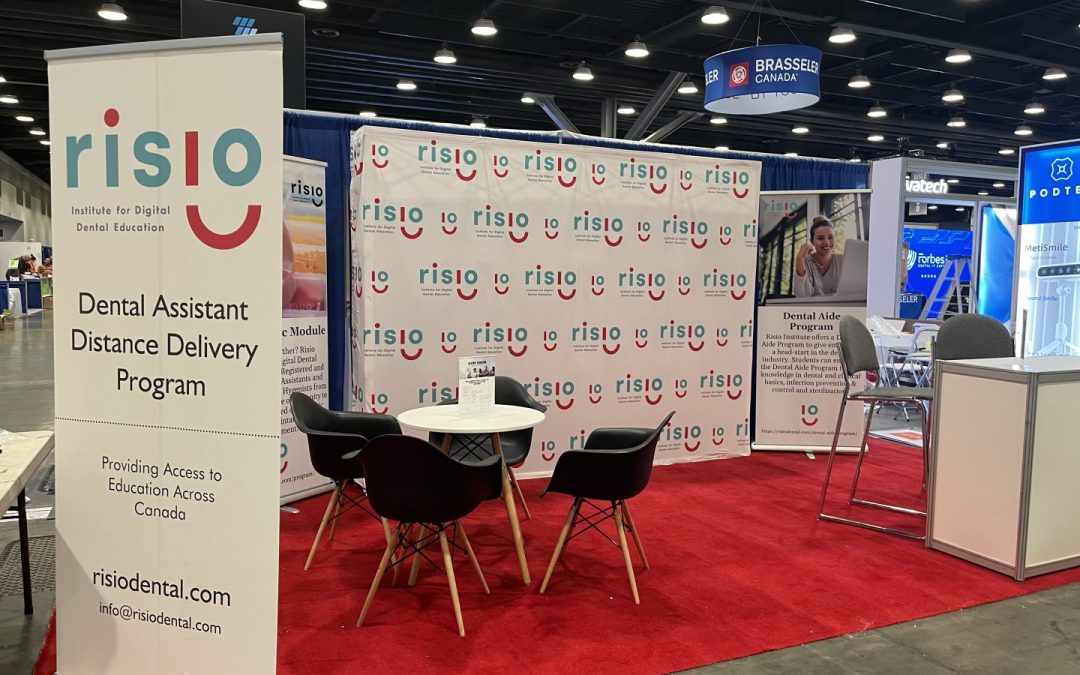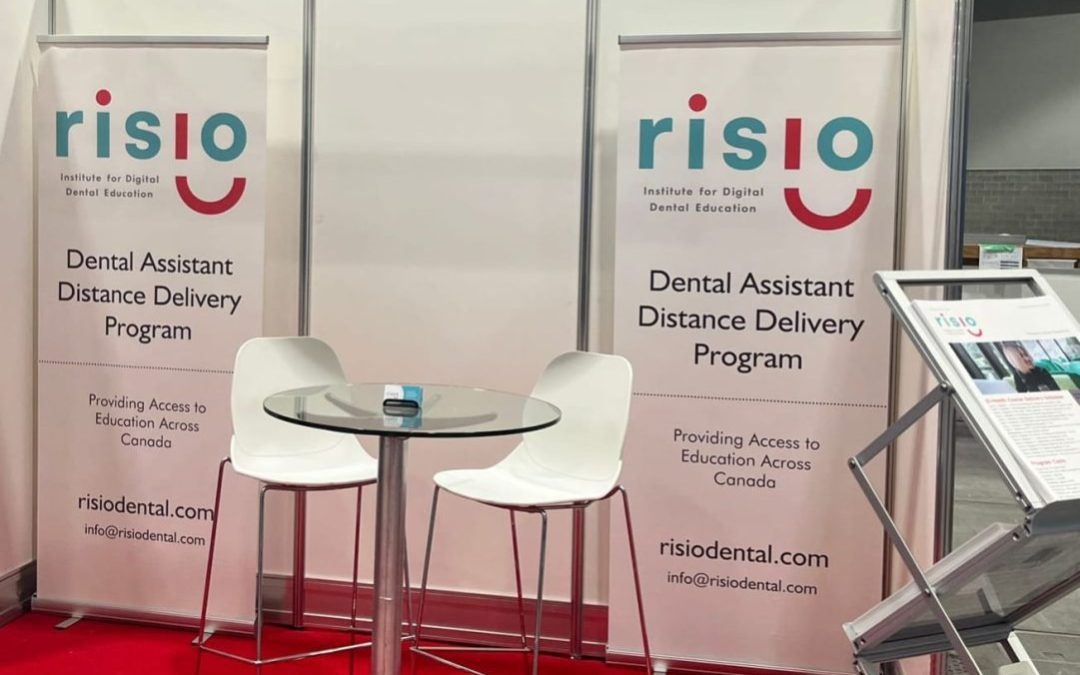No healthcare professional succeeds without the support of a trusted team. For dentists, this includes everyone from their dental assistant and hygienist (yes, there’s a difference) to their reception staff.
Practicing as a Registered or Certified Dental Assistant in Canada requires you to complete an accredited dental assistant program, pass the board certification exam, meet provincial requirements, and keep their certification current.
The Dental Assistant Defined
Every member of a dental team plays a vital role in the success of a patient’s oral health. This is where dental assistants come in. They wear many hats throughout the day, making them an indispensable member of any dental team.
Dental assistants work directly with patients and dentists. Here’s a closer look at what they do:
- Prepare, sterilize, and organize instruments
- Prepare treatment rooms
- Mix dental materials
- Assist with suction during treatments
- Take dental impressions and capture X-rays
- Apply topical anesthetics
Beyond clinical duties, dental assistants often handle administrative tasks like scheduling appointments, managing patient records, and processing insurance claims. They’re often the first friendly face that patients see when they arrive, helping to create a welcoming and professional environment.
The variety that comes with this role means that no two days are exactly alike. You might assist with routine cleanings in the morning, help with a root canal procedure after lunch, and finish the day by teaching a patient proper brushing techniques.
Education & Training Requirements
Training and education are non-negotiables for anyone interested in working in the healthcare sector.
Practicing as a dental assistant means registering with your province’s regulatory college, which requires completing an accredited dental assisting program. These programs combine theory with hands-on clinical experience, typically lasting 20 to 24 months.
Academic Prerequisites
Most dental assisting programs require a high school diploma or equivalent. Some schools may have specific course requirements, such as biology or chemistry, though these vary by institution.
If you’re missing certain prerequisites, many colleges offer upgrading courses to help you meet admission requirements.
Program Components
Dental assisting programs cover a comprehensive curriculum designed to prepare you for real-world practice, focusing on subjects that include:
- Dental Sciences: You’ll study tooth anatomy, oral pathology, and dental terminology. Understanding how the mouth works and learning about common dental conditions forms the foundation of your clinical training.
- Clinical Procedures: Hands-on training covers instrument handling, chairside assisting techniques, and patient positioning. You’ll learn to anticipate the dentist’s needs and work efficiently as a team.
- Radiography: Most provinces allow trained dental assistants to take X-rays. Your program will include radiation safety, positioning techniques, and image processing.
- Infection Control: Proper sterilization procedures and infection prevention protocols are critical in dental settings. You’ll master all of these essential safety practices.
- Dental Materials: Learning about different filling materials, impression compounds, and other dental products helps you prepare and handle them correctly.
- Practice Management: Administrative skills like appointment scheduling, inventory management, and basic bookkeeping round out your training.
Clinical Experience Requirements
Classroom learning only takes you so far. Risio Institute wants you to be successful, which is why our dental assisting program is one of the very few in Canada that includes a Work Integrated Learning (WIL) component at an actual dental practice. This hands-on training allows you to apply your knowledge, develop confidence, and learn directly from experienced professionals, giving you a real-world glimpse into what being a dental assistant actually entails.
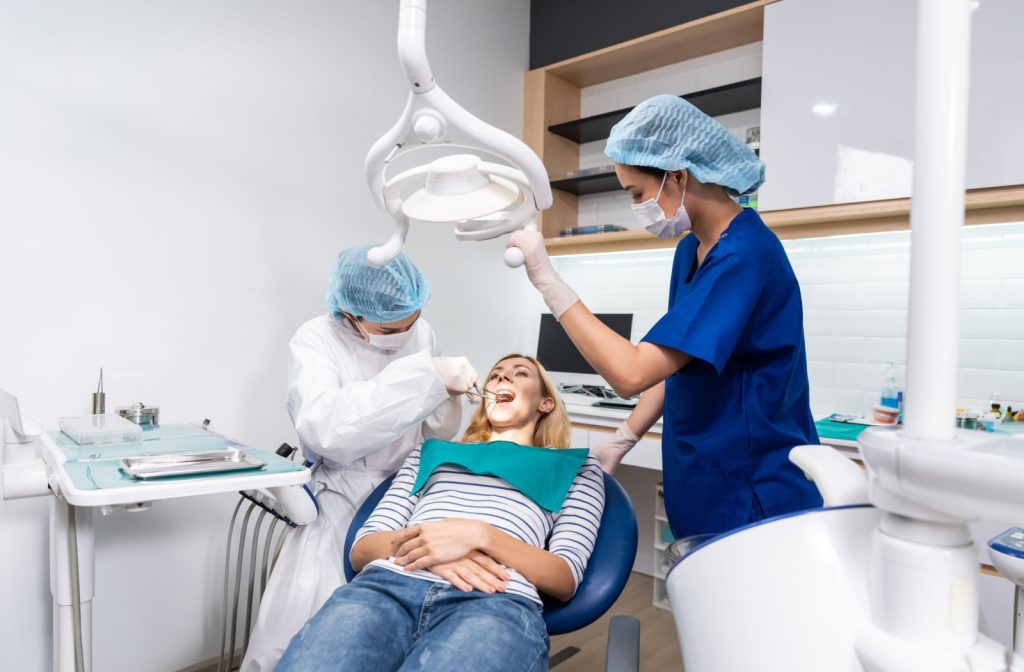
Certification & Licensing
Graduating from your program is worth celebrating, but it doesn’t mean you’ve crossed the finish line yet. To practice as a dental assistant, you’ll need certification to register with your province’s regulatory college.
National Dental Assisting Examining Board (NDAEB)
Most provinces recognize certification from the NDAEB. This comprehensive examination tests your knowledge across all areas of dental assisting, from clinical procedures to infection control. The exam includes both written and practical components.
Provincial Requirements
Each province has its own regulatory body that oversees dental assistants. Some provinces require additional examinations or continuing education requirements. It’s important to research the specific requirements in the province where you plan to practice.
Maintaining Certification
Lifelong learning is at the heart of healthcare.
Once certified, you’ll need to maintain your credentials through continuing education. Most provinces require a certain number of continuing education hours annually to keep your certification current. This is so you stay up-to-date with new techniques, technologies, and regulations.
Career Specializations & Advancement
The dental field offers several paths for career growth and specialization. As you gain experience, you might choose to focus on specific areas, such as:
- Orthodontic Assisting: Working with braces, aligners, and other orthodontic appliances. This requires further training but can lead to higher wages and more specialized skills.
- Oral Surgery Assisting: Helping with more complex procedures like wisdom tooth extractions and dental implants.
- Pediatric Dental Assisting: Working with children requires refining your communication and interpersonal skills. Pediatric dental assistants help create positive experiences for young patients, making dental visits more comfortable and less intimidating.
- Expanded Function Dental Assistant (EFDA): Some provinces allow dental assistants to perform additional procedures with extra training. For example, in Alberta and Manitoba, dental assistants can take a post-graduate module in scaling and perform scaling procedures for patients who qualify within their scope of practice.
Choosing the Right Training Program
The pathway to becoming a dental assistant starts with furthering your education. As with any education program, there are a few things to keep in mind:
- Accreditation: Confirm that the institution you’re interested in is recognized by provincial regulatory bodies and meets certification requirements.
- Format Options: Some programs offer online theory components combined with in-person clinical training, providing flexibility for students with other commitments.
- Clinical Partnerships: Programs with strong relationships with local dental practices often provide better clinical experiences and job placement opportunities.
- Support Services: Look for schools that offer career counselling, job placement assistance, and student support services.
- Location and Schedule: Consider whether you prefer full-time or part-time options and whether you can manage travel requirements for the clinical components of your desired program.
Invest In Your Future
Becoming a dental assistant offers a pathway into healthcare that doesn’t require years of university study.
The first step is finding a program that aligns with your needs. Oftentimes, the flexibility and independence of online learning makes it perfect for busy people, which is why our program at the Risio Institute for Dental Education may be exactly what you need.
Connect with our dedicated team to learn more about our program.
